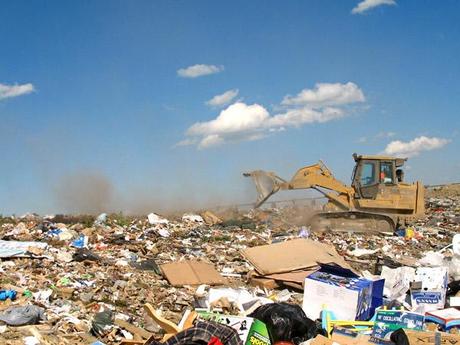Waste to Energy – Solution for Tomorrow’s Energy
In a growing world, where the conventional forms of energy are fast moving towards extinction as well as are contributing generously to global concerns like the greenhouse effect and global warming, the need to innovate and employ alternate or unconventional energy sources has become crucial for the existence of a future. Waste-to-Energy, also widely recognized by its acronym WtE is the generation of energy in the form of heat or electricity from waste. (The process is also called Energy from waste to EfW). Using developing technology, these various methods aim to compress and dispose waste, while attempting the generation of energy from them.
Each month millions of tons of waste is produced. Either they become a part of landfill or are exported to third world countries. This causes huge environmental impact in terms of wildlife, ecosystems and to human health. Keeping this in mind, many new waste treatment plants have come up and have developed new ways to generate energy from landfill waste.

Energy from waste offers recovery of energy by conversion of non-recyclable materials through various processes including thermal and non-thermal technologies. Energy that is produced in the form of electricity, heat or fuel using combustion, pyrolization, gasification or anaerobic digestion is clean and renewable energy, with reduced carbon emissions and minimal environmental impact than any other form of energy.
How to Produce Energy from Waste
The most common and popular method for waste to energy generation is ‘Incineration‘. Incineration is also a very highly debated technology, due to the concerns it raises regarding safety and environmental impact. In simple terms it stands for a type of waste treatment process, where the organics from the waste collected are burnt at high temperatures. Waste treatments that are conducted involving high temperatures are called Thermal treatment. The heat generated from this thermal temperature is then used to create energy.
Several countries in the world, especially in Europe are experimenting with Incineration as an alternate means of energy production; Sweden, Germany and Luxembourg to name a few.
Thermal technologies:
Depolymerization uses thermal decomposition where in the presence of water, the organic compounds are heated at high temperatures. This process of thermal decomposition is called Hydrous Pyrolysis in scientific terms.
The process without the use of oxygen is called Pyrolysis. Derived from greek it is literally the synthesis of the terms, Fire and Separating. The process usually takes plastic and bio-mass as their primary ingredients. The rest works as a thermo chemical decomposition. This is again conducted at high temperatures and involves parallel changes of the chemical composition and physics.
Often said to be a replication or representation of the conditions under which fossil fuels were created, Depolymerization has its own sets of benefits and limitations.
Gasification is another developing process employed for waste to energy generation. Gasification converts carbonaceous substances into carbon dioxide, carbon mono oxide and some amount of hydrogen. This process like incineration employs high temperatures to obtain results, however the major difference is that combustion does not occur over her. Steam and/or oxygen is also used in this procedure where usually fossil fuels or organic substances are used. The gas that is produced from the whole procedure is called Synthesis gas and is considered as a good means of alternate energy. Syngas is there after used for heat and electricity production primarily among other uses.
Pyrolysis is another waste to energy process, used majorly in industrial processes. Pyrolysis is just like Hydrous pyrolysis, without the use of oxygen. Pyrolysis employs agricultural waste or organic waste from industries.
Plasma arc glasification as the name suggests uses plasma technologies to obtain syngas or synthesis gas. A plasma torch is used to ionize gas and there after obtain synthesis gas. The process generates electricity while compressing the waste.
Non-thermal technologies:
Fermentation is also being developed as a form of waste to energy management.
Anaerobic digestion is a slow process. Here in micro organisms are used to destroy the biodegradable content. No oxygen is present during this procedure. It is used both domestically and even on a commercial level to tap the release of energy during the process and use it. Anaerobic technologies are seen as good agents to reduce the green house gases from the atmosphere and also as a worthy replacement of fossil fuels. The process works as a boon for developing countries for creating low energies for cooking and lighting in homes. Both China and India have mastered the usage of this technology, employing it as a part of their respective development schemes and investing in it. Bio gas is used to run a gas engine, and energy is created for small scale use.

Waste to energy is an emerging innovative set of technologies aimed at better sustenance of the environment, with minimum damage to the ecosystems. With these technologies developing by day and their acceptance increasing amongst households and industrial set-ups worldwide, waste to energy is seen as a development tool for emerging countries. The MBT technology stands for Mechanical Biological treatment. The technology uses domestic waste as well as industrial and commercial waste to generate products.
Waste to energy or energy from waste, is a conscious attempt to equalize the patterns of our planet and save our ecological cycles. The energy generation from these technologies are small scale right now and their employment for domestic and industrial use is sparse, however they are seen as the emerging solutions for tomorrow, that are set to affect the world immensely.
Waste Energy Companies
Covanta Energy (pronounced coh-van-tuh) is one of the world’s largest owners and operators of infrastructure for the conversion of waste-to-energy (known as “energy-from- waste” or “EfW”), as well as other waste disposal and renewable energy production businesses.
Novo Energy (“Novo”) is a Colorado-based renewable energy company that provides state-of-the-art technology, equipment, and project support services for the renewable energy and solid waste disposal industries.
http://www.naanovo.com/wte
Naanovo is currently developing a number of Waste to Energy (WTE) projects utilizing a modular design, the company calls WTE Maax™. This unique design takes advantage of “best available” WTE technologies and maximizes the amount of power output that can be produced in the combustion of large volumes of municipal solid waste (MSW).
http://wheelabratortechnologies.com
Wheelabrator Technologies Inc. is a world leader in the safe and environmentally sound conversion of municipal solid waste – and other renewable waste fuels – into clean energy.
http://www.sierraenergycorp.com
Sierra Energy is a waste gasification and renewable energy company founded in Davis, California in 2004. Sierra Energy commercializes in revolutionary FastOx waste gasification technology, a simple derivative of the centuries-old blast furnace technology.
EnerTech Environmental, Inc. is a renewable energy company dedicated to protecting public health and the environment through the development and commercialization of clean energy technologies for biosolids (sewage sludge) and other organic wastes.
http://www.zerowasteenergy.com
Zero Waste Energy is a development company that designs, builds, and operates integrated solid waste facilities throughout North America.
Tetronics International is a global leader in the supply of Direct Current (DC) Plasma Arc systems for a wide range of applications including Waste Recovery, Hazardous Waste Treatment, Industrial Waste Treatment, Metal Recovery, Production Processes and Nano Materials.
http://www.advancedplasmapower.com
Advanced Plasma Power Limited (APP) is the world leader in waste to energy and advanced fuels technology. APP is revolutionising the way in which we treat waste sustainably by maximising the value from it as a source of materials and energy while minimising the impact of waste on the environment.
GGI™Energy is committed to minimizing the amount of waste that goes into landfills or open air dumps every year. We have pledged to keep more than 30 million tons of waste from going into landfills every year, we are on our way to achieve this before 2020.
Whatever you intend to recycle or turn into an alternative fuel eFACTOR3 can provide a custom solution to meet your needs. This includes post industrial waste, C&D waste, MSW (Municipal Solid Waste), post consumer waste, paper and cardboard, Paper Sludge, wood, carpet, packaging film, agriculture film, plastic or Biomass
References:
http://www.epa.gov/waste/nonhaz/municipal/wte/

